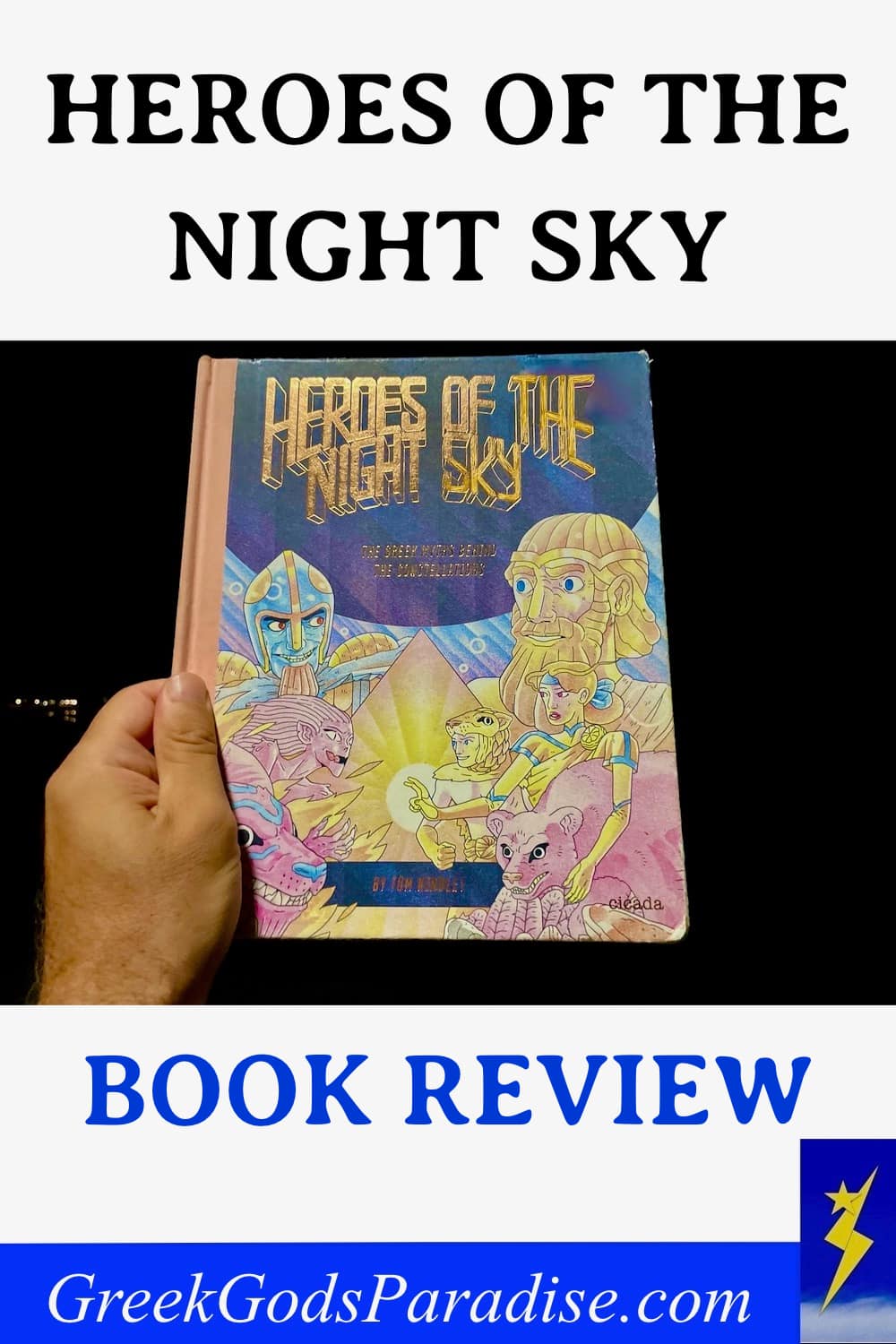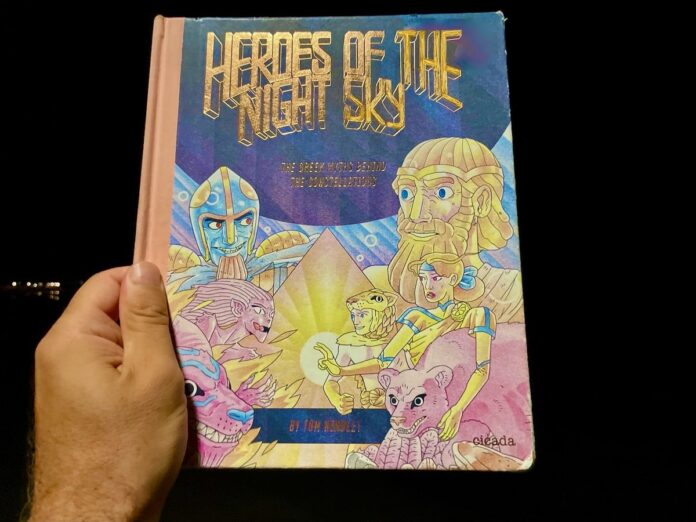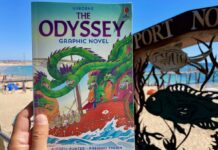Heroes of the Night Sky: The Greek Myths behind the Constellations is a fantastic book that combines ancient Greek mythology with stunning illustrations to bring the night sky to life. The stories of Gods and heroes that inspired the creation of the ten different constellations in the book are discussed, and you will get a good glimpse of them in this review of Heroes of the Night Sky.
Get ready to go on a celestial journey through the fascinating world of Greek mythology with “Heroes of the Night” by Tom Kindley. From the captivating tale of Andromeda and Perseus to the awe-inspiring feats of Hercules, this book is a treasure trove of ancient legends. Step into a universe filled with stars and stories, as each constellation comes alive with history and wonder.
Explore the heavens through vivid illustrations and detailed explanations, providing a visual feast for the imagination. Discover the secrets of the night sky like never before. These two pages show you the constellations covered in the amazing book.
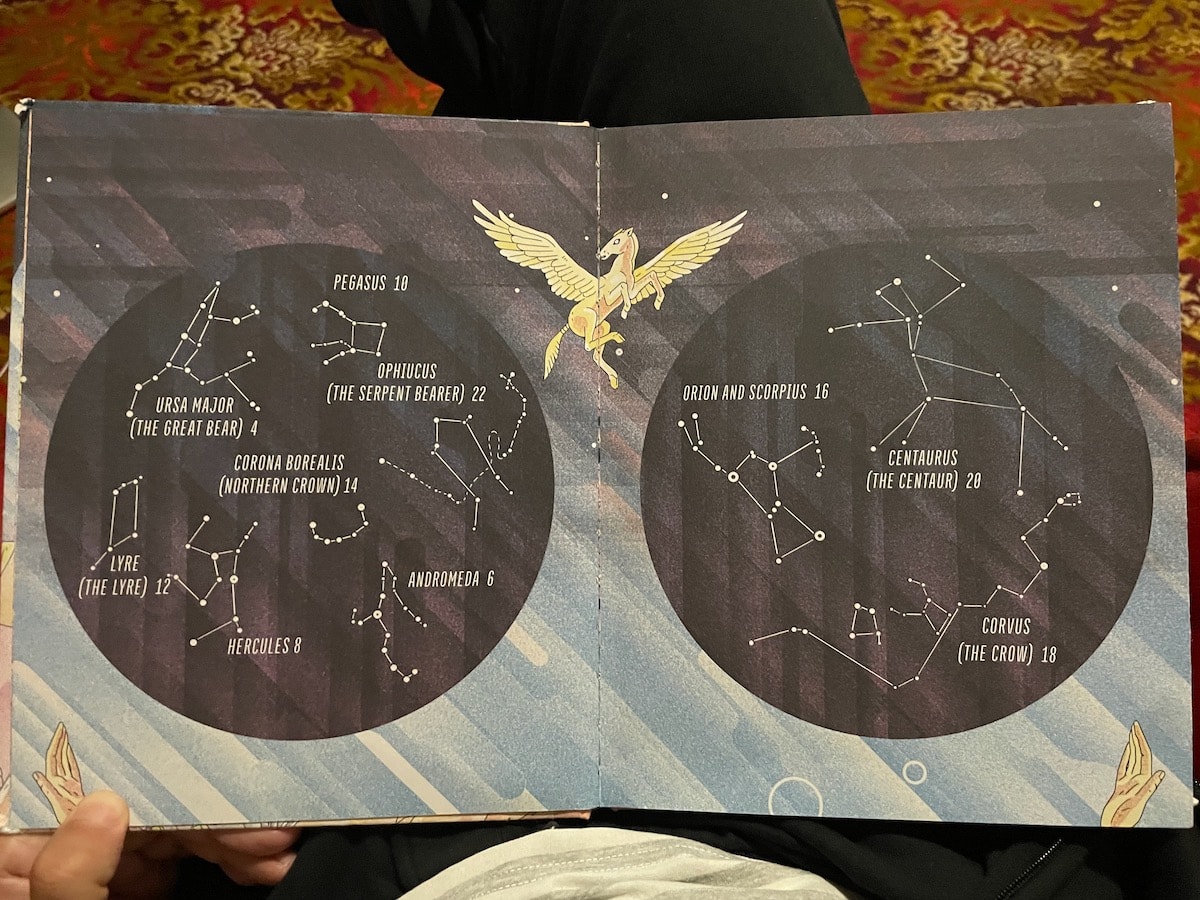
What sets Heroes of the Night Sky apart is its unique approach, with parts of the book presented in a graphic novel format that makes the stories even more engaging for readers. The book not only educates readers on the origins of the constellations, but also encourages them to look up at the night sky with a new sense of wonder and curiosity.
With its accessible writing and beautiful artwork, Heroes of the Night Sky is sure to spark an interest in both Greek mythology and astronomy in young readers, as well as every Greek myth admirer.
Heroes in the Night Sky: Review of Constellations
Heroes in the Night Sky showcases the beauty and complexity of the night sky as seen through the lens of ancient Greek storytelling. Each constellation is given the royal treatment with its own fold-out page, totalling four pages of cosmic exploration for each constellation. One page delves into the rich lore of Greek mythology surrounding the constellation, while the remaining three showcase stunning illustrations that bring each celestial hero to life.
While you only catch a glimpse of the mesmerizing artwork here, trust me when I say that this book is a must-have for anyone fascinated by the mysteries of the night sky.
Let’s kick off this captivating review of Heroes in the Night Sky by diving into the enchanting world of Ursa Major, the first constellation featured in the book.
Ursa Major Constellation (The Great Bear)
Once upon a time, in the mystical land of Ancient Greece, there lived a beautiful princess named Callisto. She was known for her great beauty and grace, which captivated the hearts of all who gazed upon her.
One day, while out hunting in the forest, Callisto caught the eye of the mighty God Zeus. Enthralled by her beauty, Zeus disguised himself as a handsome hunter and approached her. They soon fell deeply in love and spent many blissful days together in the forest. However, Zeus was already married to Hera, the jealous queen of the Gods, who soon discovered his affair with Callisto.
Enraged by his betrayal, Hera cursed Callisto, transforming her into a bear and banishing her to roam the forest.

Years passed, and Callisto, now trapped in the form of a bear, roamed the woods in sorrow and despair. One day, her son, Arcas, a skilled hunter, unknowingly stumbled upon her in the forest. Ready to attack what he thought was a wild beast, Callisto’s heart filled with fear and grief.
As she pleaded with the Gods for mercy, Zeus took pity on Callisto and transformed both her and her son into constellations. Callisto became Ursa Major, or the Great Bear, while Arcas became Ursa Minor, the Lesser Bear.
United forever in the night sky, mother and son are immortalized as a testament to the enduring power of love and forgiveness.
So next time you gaze up at the stars and see the majestic Ursa Major, remember the tale of Callisto and Arcas, and the eternal bond that connects them in the heavens above. For even in the darkest of times, love and forgiveness can shine as brightly as the stars themselves.
Andromeda Constellation: The Greek Myth of Andromeda
In the vast expanse of the night sky, there glimmers a constellation known as Andromeda, named after the beautiful princess of Greek mythology.
Andromeda was the daughter of King Cepheus and Queen Cassiopeia, rulers of the kingdom of Ethiopia. Unfortunately, Cassiopeia’s vanity and boastfulness led her to claim that Andromeda was more beautiful than the sea nymphs, the Nereids. This arrogance angered the sea god Poseidon, who sent a fearsome sea monster to terrorize the kingdom.
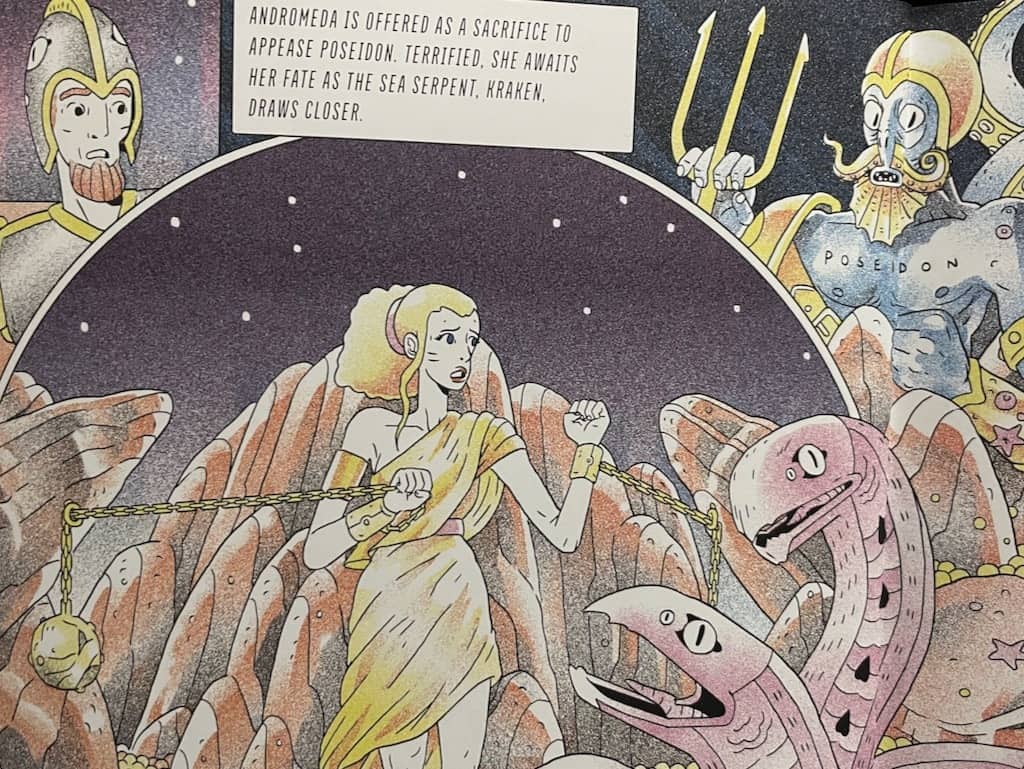
Desperate to save their land from destruction, King Cepheus and Queen Cassiopeia consulted an oracle, who prophesied that the only way to appease Poseidon and defeat Cetus was to sacrifice Andromeda to the monster. Heartbroken but determined to save her people, Andromeda was chained to a rock by the sea as an offering to Cetus.
However, before the sea monster could claim her, the hero Perseus arrived on the scene. With his mystical winged sandals and mirrored shield, he slew Cetus and saved Andromeda from certain doom.
Grateful for her rescue, Andromeda agreed to marry Perseus, and they became a legendary couple in Greek mythology. To honor her bravery and perseverance, the Gods immortalized Andromeda in the night sky as a beautiful constellation, forever remembered for her courage and beauty.
Hercules Constellation: The Greek Myth of Hercules
In the vast expanse of the night sky, glimmering with myriad twinkling stars, one constellation stands out among the rest – Hercules, the mighty hero of ancient Greek mythology.
According to legend, Hercules was the son of Zeus, the king of the Gods, and a mortal woman named Alcmene. From the moment of his birth, it was foretold that Hercules would become a legendary hero, destined to perform incredible feats of strength and courage.
One of Hercules’ most famous adventures was his Twelve Labors, a series of seemingly impossible tasks assigned to him by King Eurystheus. These tasks included slaying the monstrous lion of Nemea, capturing the elusive golden hind, and defeating the twelve-headed Hydra.
In Greek mythology, Hercules was tasked with capturing and bringing Cerberus, the three-headed dog guardian of the Underworld, to the surface as one of his twelve labors. With the help of Athena and Hermes, Hercules journeyed to the Underworld and managed to overpower Cerberus before bringing him to the surface. After showing Cerberus to King Eurystheus, Hercules returned the beast to the Underworld unharmed.
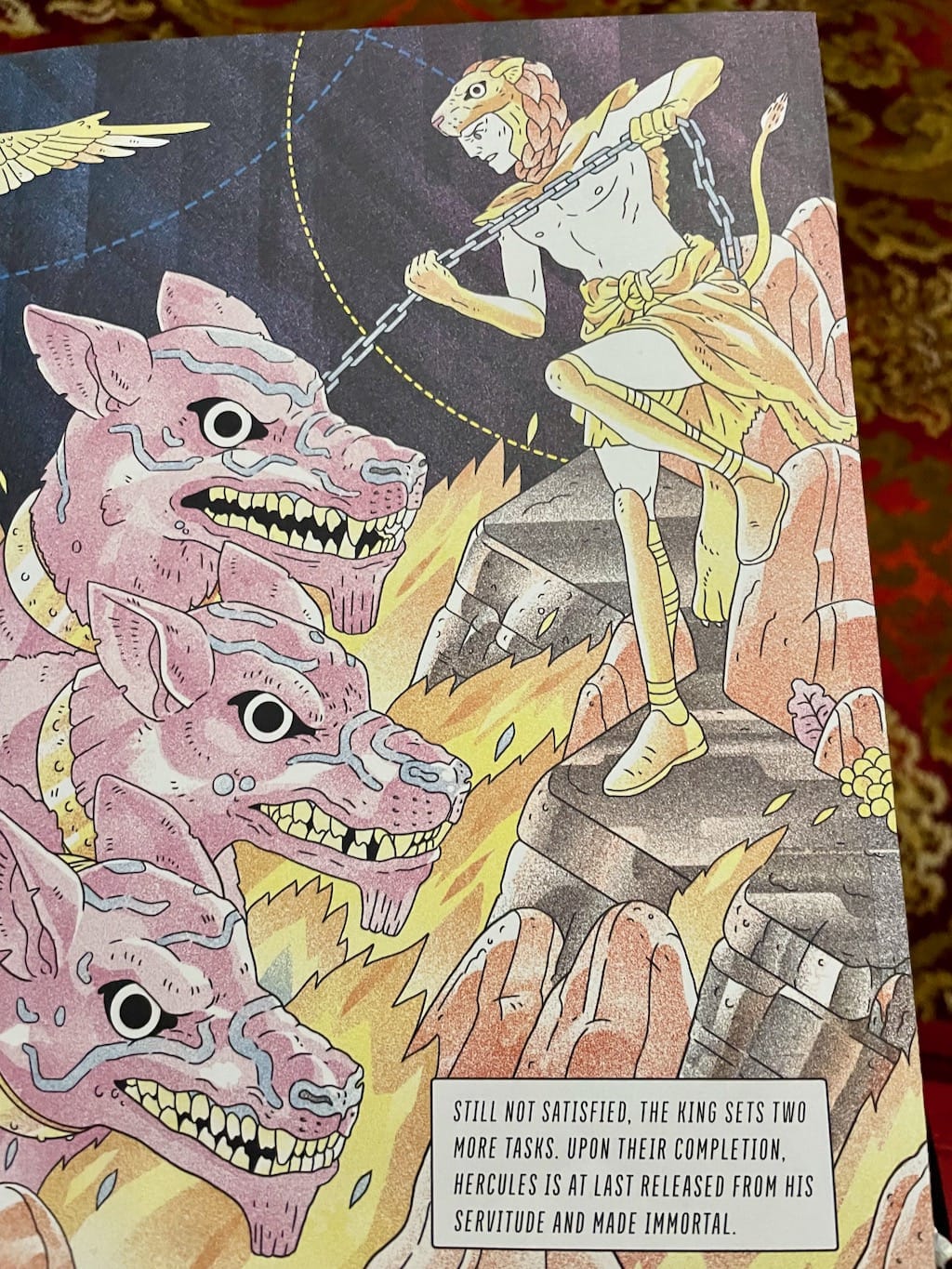
As Hercules completed each labor, his fame and reputation as a hero grew, and he ascended to the heavens upon his death, becoming immortalized as a constellation for all eternity.
Now, when you gaze up at the night sky knowing that the constellation of Hercules is shining brightly above, remember the incredible tales of heroism and triumph that inspired its celestial form. And perhaps, like Hercules, you too can find the strength and courage to conquer any obstacle that stands in your way.
Tip: Here are the 12 best Hercules movies to watch.
Pegasus Constellation: The Greek Myth of Pegasus
In the twinkling depths of the night sky, there lies a magnificent constellation known as Pegasus, the mythical winged horse of Greek lore. Legend has it that Pegasus was born from the spilt blood of the Gorgon Medusa, a fearsome creature with snakes for hair that could turn any mortal to stone with a single glance.
But Pegasus was no ordinary horse – with wings that shimmered like silver and a mane that sparkled like diamonds, he possessed the power of flight, soaring through the heavens with grace and speed.
It is said that whoever caught and tamed Pegasus could conquer any challenge, for he was a creature of great strength and unparalleled majesty.
One famous tale of Pegasus tells of his role in the defeat of the monstrous Chimera, a creature with the head of a lion, the body of a goat, and the tail of a serpent. It was only with the help of the mighty winged horse that the hero Bellerophon was able to vanquish the Chimera and prove his worthiness as a true warrior.
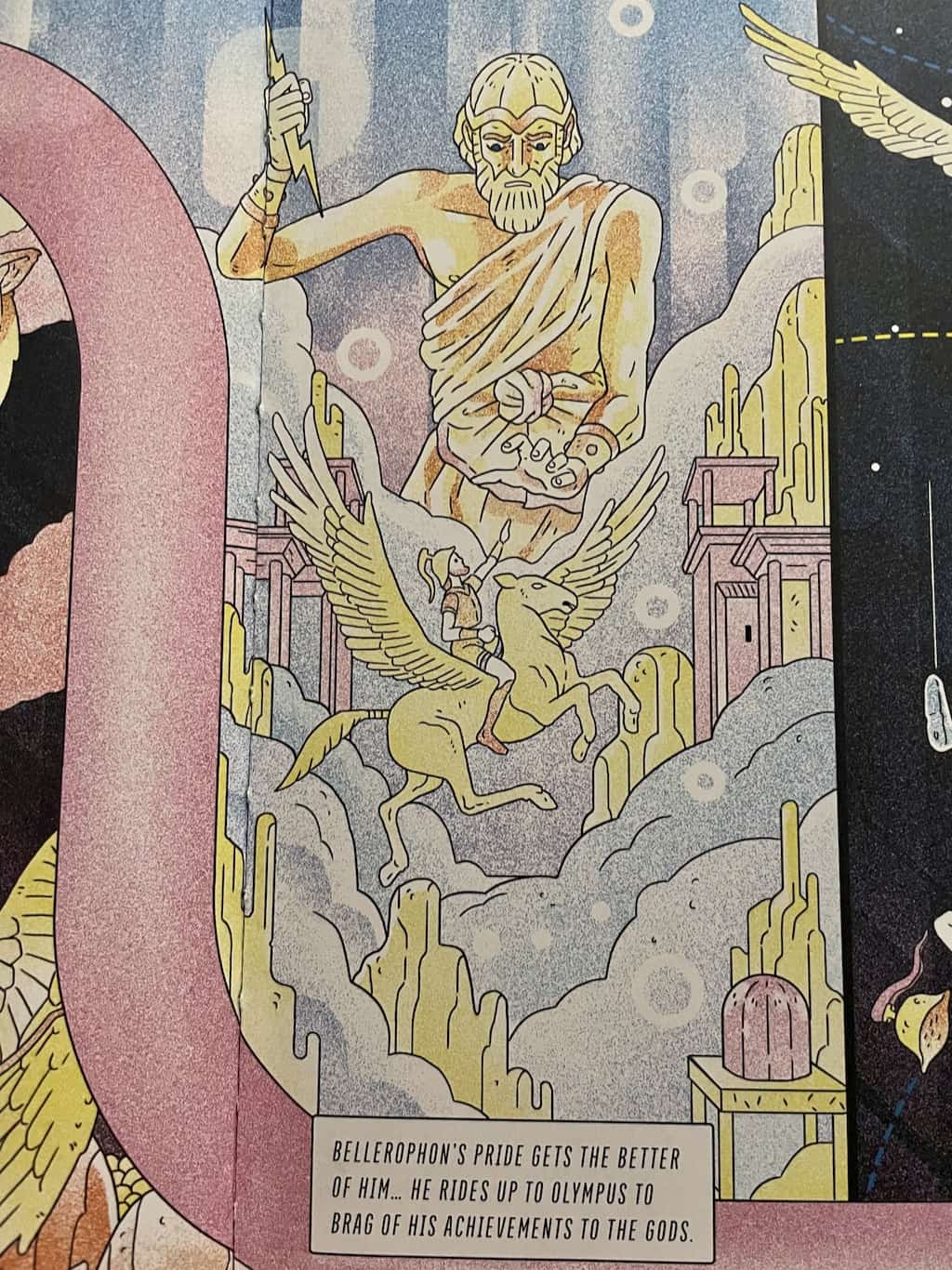
To this day, the constellation of Pegasus serves as a reminder of the power of imagination and the boundless possibilities of the human spirit.
So the next time you gaze up at the night sky and see the shimmering form of Pegasus, remember the legendary horse who dared to defy the laws of gravity and soar to new heights of greatness. And who knows, maybe you too will find the courage to reach for the stars and make your wildest dreams come true.
Lyra Constellation: The Greek Myth of Lyra
In the sparkling night sky, there is a constellation that shines brighter than all the rest – Lyra, the celestial harp. Legend has it that this mesmerizing constellation was placed in the heavens by the ancient Greek Gods themselves, as a tribute to the beautiful music of Orpheus, the greatest musician and poet of all time.
According to the myth, Orpheus was a gifted musician who could charm even the wildest beasts with his haunting melodies. His music was said to be so enchanting that it could make the trees dance and the stones weep.
Orpeus ended up suffering a major tragedy when his wife was bitten by a snake. She died, but Orpheus wanted her back so he made his way to the Underworld to see if Hades would let her return with him. You can read all about it in 10 Inspirational Greek myth love stories.
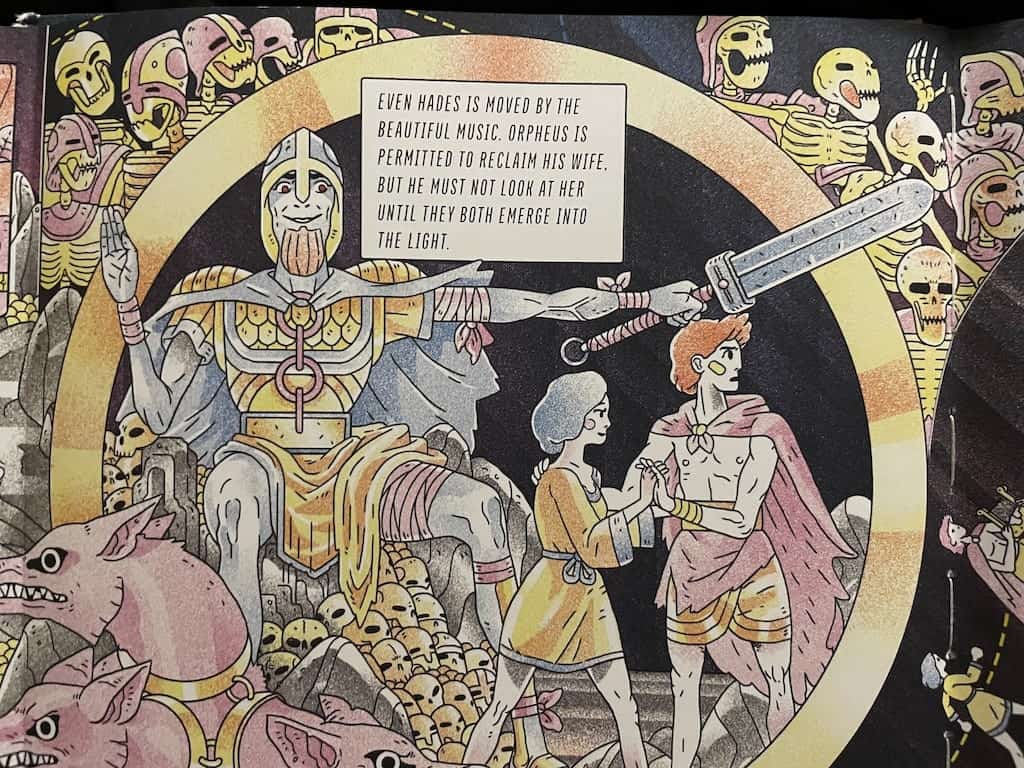
SHe suffered another tragedy when Eurydice looked back when they were just about to exist the Underworld. For this reason, she had to stay. Orpheus had lost her, but Apollo took pity on him and placed his lyre in the stars in commemoration of his divine music.
So, the next time you gaze up at the night sky and see the twinkling lights of Lyra, remember the captivating tale of Orpheus and his magical lyre, and let the music of the stars transport you to a world of wonder and imagination.
Corona Borealis
Once upon a time, in the vast and twinkling sky, there lived a constellation unlike any other – Corona Borealis, also known as the Northern Crown. This beautiful cluster of stars was said to represent the crown of Ariadne, a princess of Crete with a story so captivating, it was woven into the very fabric of the heavens.
Legend has it, Ariadne was the daughter of King Minos, ruler of the labyrinthine city of Knossos. When Theseus, a heroic prince, arrived in Crete to slay the monstrous Minotaur, Ariadne fell deeply in love with him. In a daring act of bravery and cunning, she provided Theseus with a magical ball of thread to help him navigate the treacherous labyrinth and defeat the beast.
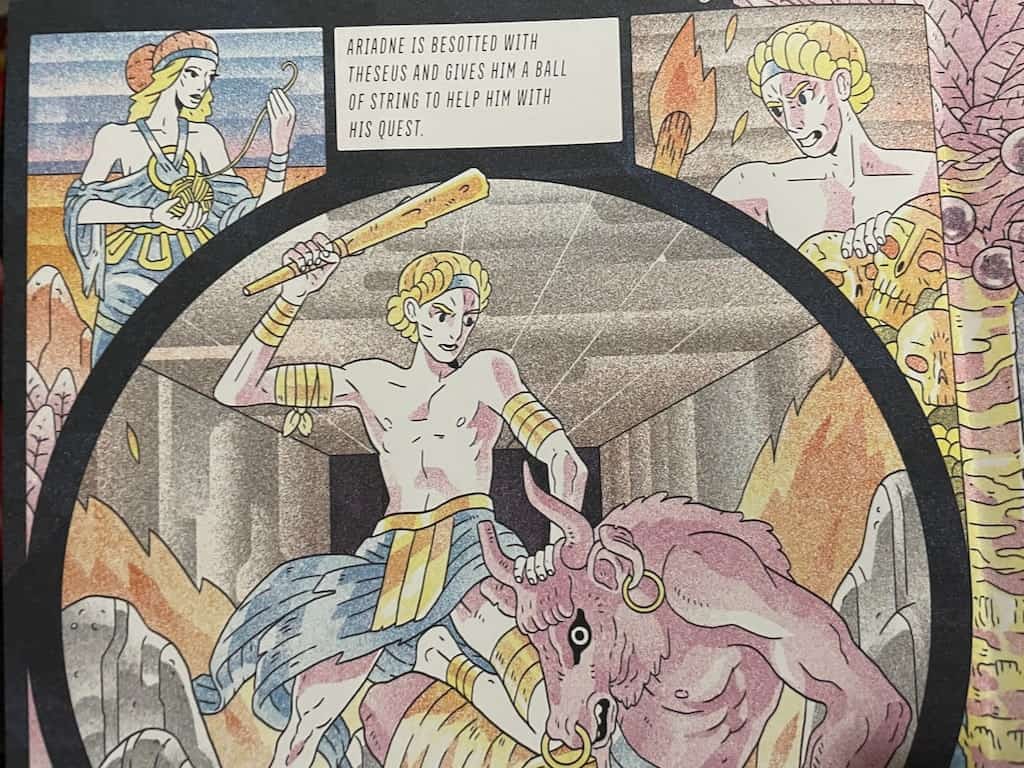
After Theseus emerged victorious, he and Ariadne fled together, but their love story took a tragic turn. During their journey, Theseus abandoned Ariadne on the island of Naxos, leaving her heartbroken and alone.
But the Gods took pity on Ariadne and transformed her tear-streaked face into a radiant constellation, the Northern Crown, as a symbol of her enduring beauty and resilience. And so, to this day, Corona Borealis shines brightly in the night sky, a reminder that even in the face of heartbreak and betrayal, love and strength can endure, immortalized in the stars above.
Orion and Scorpius: The Greek Myths behind the Constellations
In the ancient Greek sky, glimmering with a tapestry of stars, two constellations rule the night – Orion, the mighty hunter, and Scorpius, the scorpion. Their rivalry is the stuff of legend, a tale of love, jealousy, and divine intervention.
Orion was a skilled and boastful hunter who traveled the world in search of prey. His arrogance was matched only by his charm, and he soon caught the eye of Artemis, the Goddess of the hunt. Enchanted by his bravery, she took him as her companion and the two became inseparable. But their happiness was not to last, for Gaia, the mother earth, grew jealous of their love.

Gaia decided to sen Scorpius, a massive scorpion, to attack Orion. In a fierce battle that shook the heavens, Scorpius struck a fatal blow, and Orion fell to the ground. Heartbroken, Artemis begged Zeus, the king of the Gods, to save her beloved.
Touched by her grief, Zeus granted her wish and placed Orion among the stars, forever out of reach of the vengeful scorpion. As a final gift, he placed Scorpius in the sky as well, forever chasing Orion across the heavens. And so, to this day, Orion and Scorpius are locked in an eternal dance, their rivalry never-ending as they race across the sky. It is a reminder that even the mightiest of hunters can fall, and that love and jealousy can shape the destiny of even the most powerful beings in the universe.
Corvus Constellation
Once upon a time in ancient Greece, there lived a mischievous crow named Corvus. Corvus was known for his playful antics and clever tricks, making him a favorite among the Gods and Goddesses on Mount Olympus.
One day, Corvus was flying through the sky when he spotted a beautiful water snake named Hydra slithering near a crystal-clear lake. Intrigued by the shiny scales of the serpent, Corvus decided to swoop down and play a prank on Hydra by stealing her precious eggs.
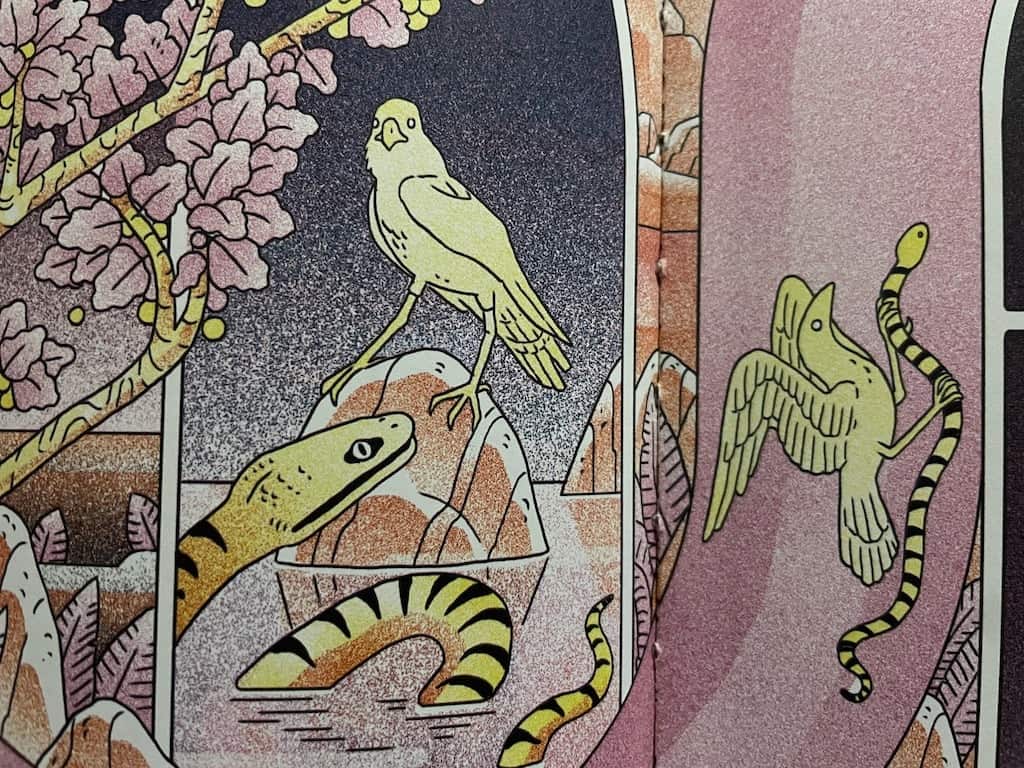
Hydra, furious at the loss of her eggs, cried out for help, catching the attention of Apollo, the God of the sun, who witnessed the thievery from his chariot in the sky.
Enraged by Corvus’ actions, Apollo punished the crow by cursing him to never drink from the lake again.With his wings scorched by Apollo’s fiery wrath, Corvus was forever condemned to wander the night skies in search of water, his thirst never quenched.
To this day, Corvus can be seen soaring above, forever visible as a constellation in the sky, a reminder of the consequences of deceit and trickery. And so, the tale of Corvus the crow and Hydra the water snake continues to be told, immortalized in the stars above as a warning to all who dare to play with fire.
Centaurus Constellation and the Greek Myth behind it
In the vast expanse of the night sky lies the Centaurus constellation, a stunning array of stars that form the shape of a centaur – a mythical creature that is half man, half horse. But how did this mystical constellation come to be associated with such a fascinating being?
According to Greek mythology, the Centaurus constellation is named after the legendary centaur Chiron. Chiron was known for his wisdom, kindness, and knowledge of healing arts. Unlike other centaurs, who were wild and unruly, Chiron was a gentle and noble creature.
One day, Chiron was accidentally struck by a poisoned arrow, causing him great suffering. Being immortal, he could not die, but the pain was unbearable. He sought counsel from the Gods, who took pity on him and placed him among the stars as a constellation, where he could watch over humanity and continue his teachings from the heavens.
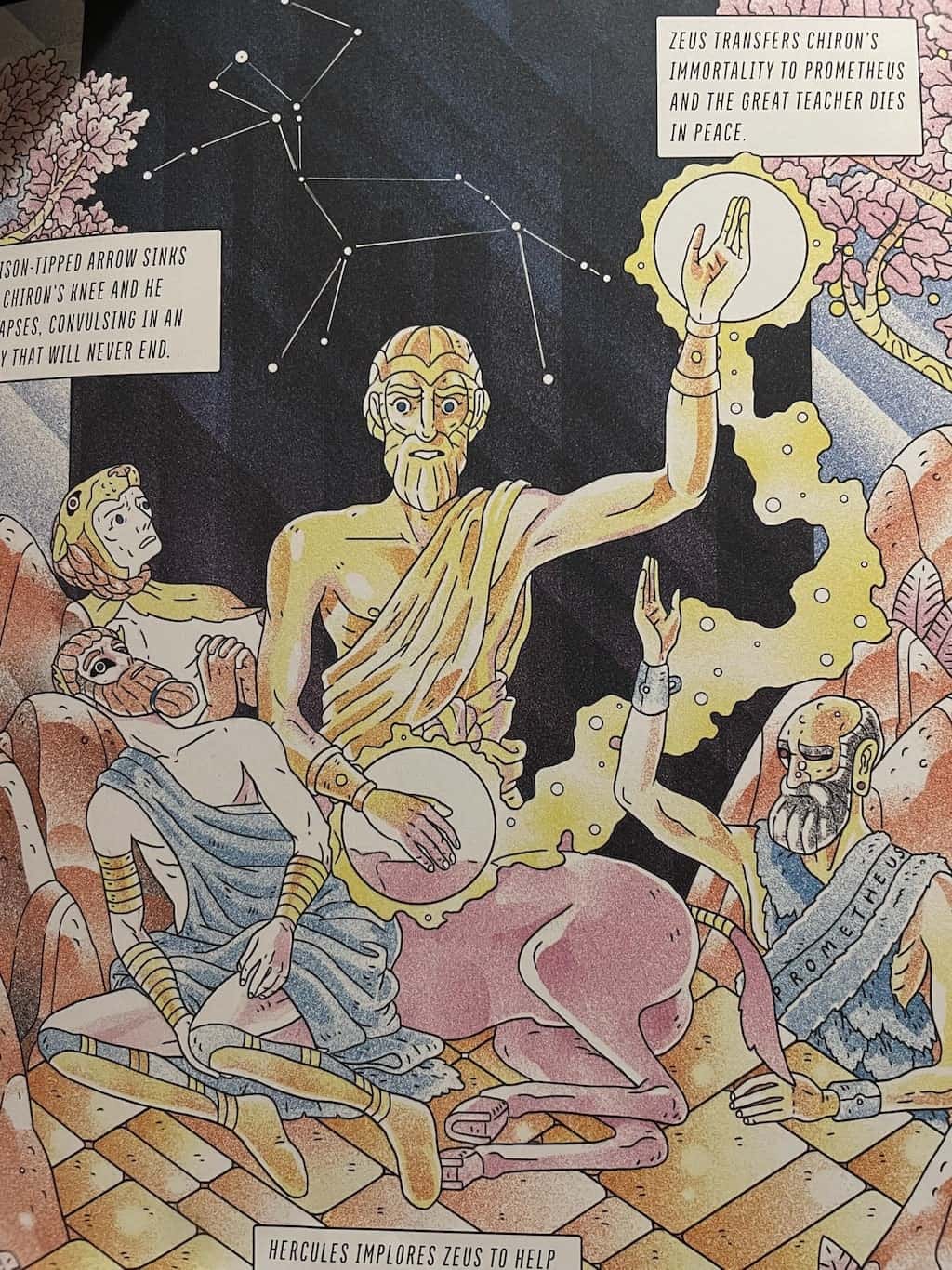
In the night sky, Chiron is depicted as a centaur holding a bow and arrow, symbolizing his skill as an archer and his connection to the natural world. His presence in the Centaurus constellation serves as a reminder of the power of compassion, wisdom, and healing.
So, the next time you gaze up at the Centaurus constellation, remember the story of Chiron and his noble sacrifice, and let his wisdom guide you on your own journey through the cosmos.
Ophiuchus Constellation
In the mythical world of ancient Greece, there was once a powerful healer and skilled serpent handler named Asclepius. Known for his ability to cure any ailment and bring the dead back to life, Asclepius was a revered figure among mortals and immortals alike. However, his incredible gift caught the attention of the Gods, who grew jealous of his power and feared that he would disrupt the natural order of life and death.
In a fit of jealousy, Zeus, the mighty king of the Gods, struck down Asclepius with a bolt of lightning, sending him to the stars to forever watch over the heavens as the constellation Ophiuchus.

Ophiuchus, also known as the serpent bearer, is depicted as a man holding a snake, symbolizing Asclepius’ mastery over serpents and healing abilities.
As a constellation, Ophiuchus is unique in that it lies along the celestial equator, straddling the line between the northern and southern hemispheres. Legend has it that those born under the sign of Ophiuchus possess a special connection to the spirit world and the healing arts. They are said to be intuitive, empathetic, and have a deep understanding of the mysteries of life and death.
So, the next time you look up at the night sky and see the constellation of Ophiuchus shining brightly, remember the tale of Asclepius and his extraordinary abilities, and perhaps you too will feel a connection to the serpent bearer and his legendary legacy.
Heroes of the Night Sky: Review Rating
Heroes of the Night Sky rating: 8.5/10
The effort that has gone into the creation of the book is incredible! I can’t really fault the book, so I highly recommend checking it out.
Check Availability and Pricing: Heroes of the Nigh Sky: The Greek Myths behind the Constellations
If you have an interest in astronomy, other planets and the stars, you may also want to check out Nasa and the Greek Gods.
Pin it … Share it
